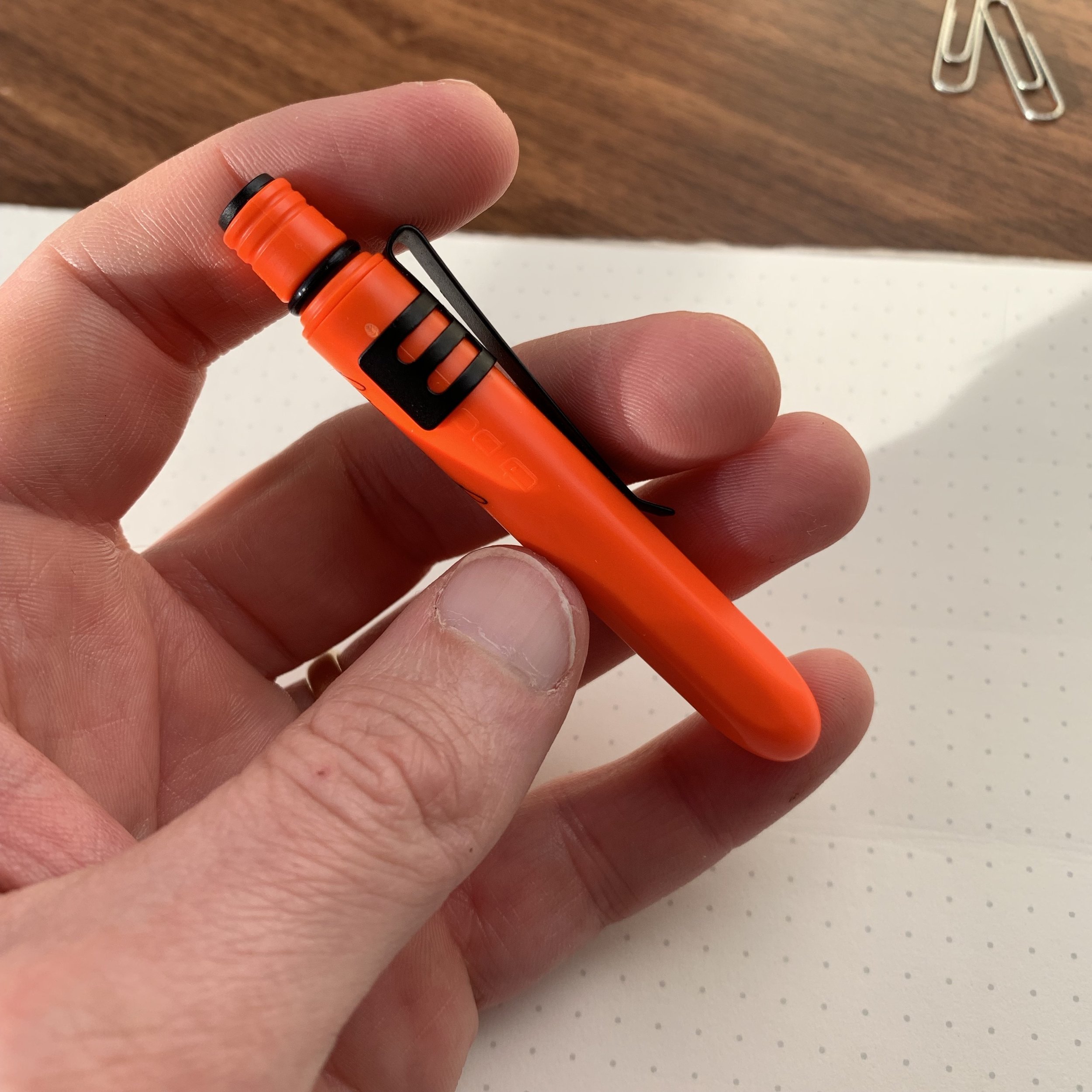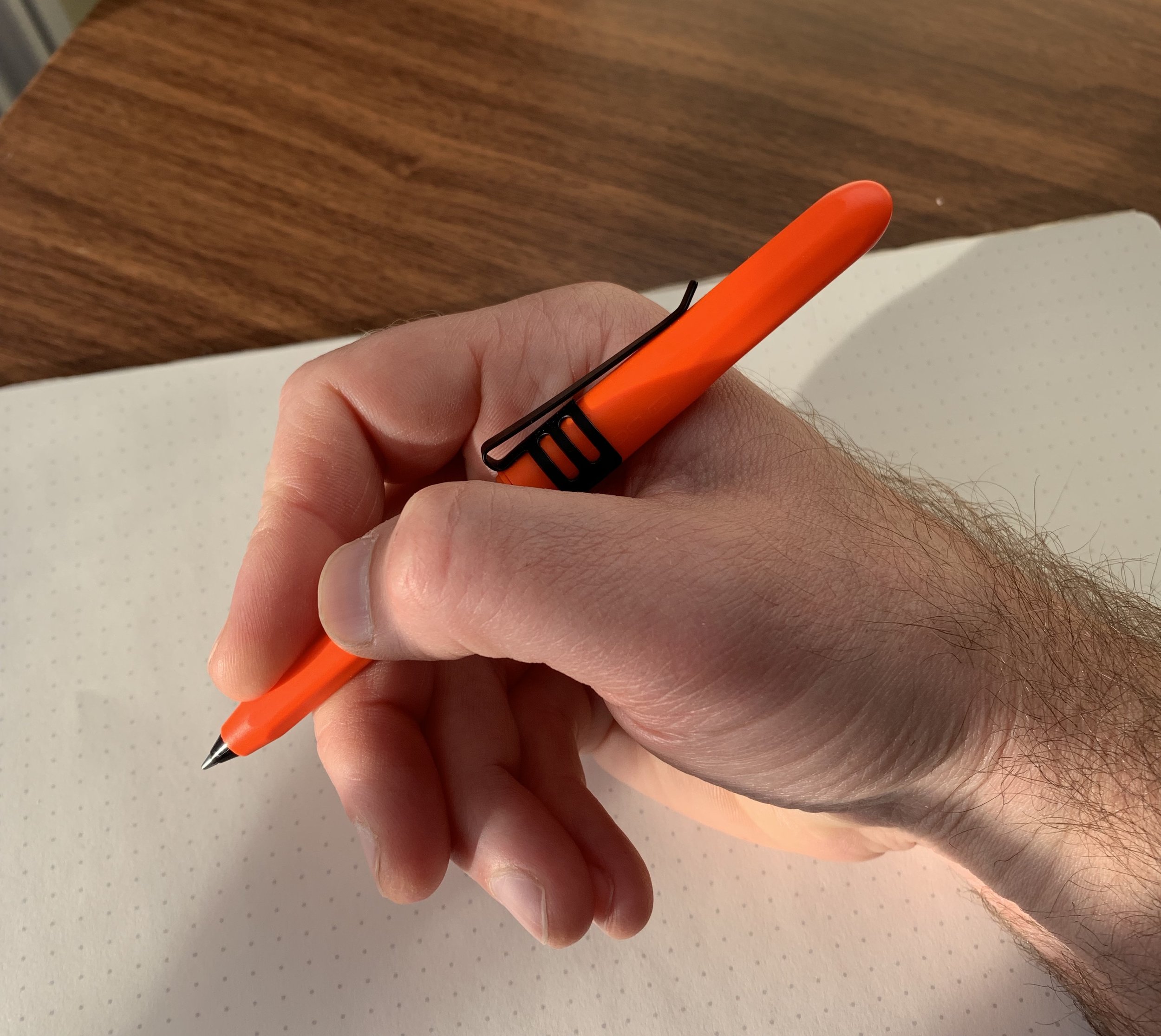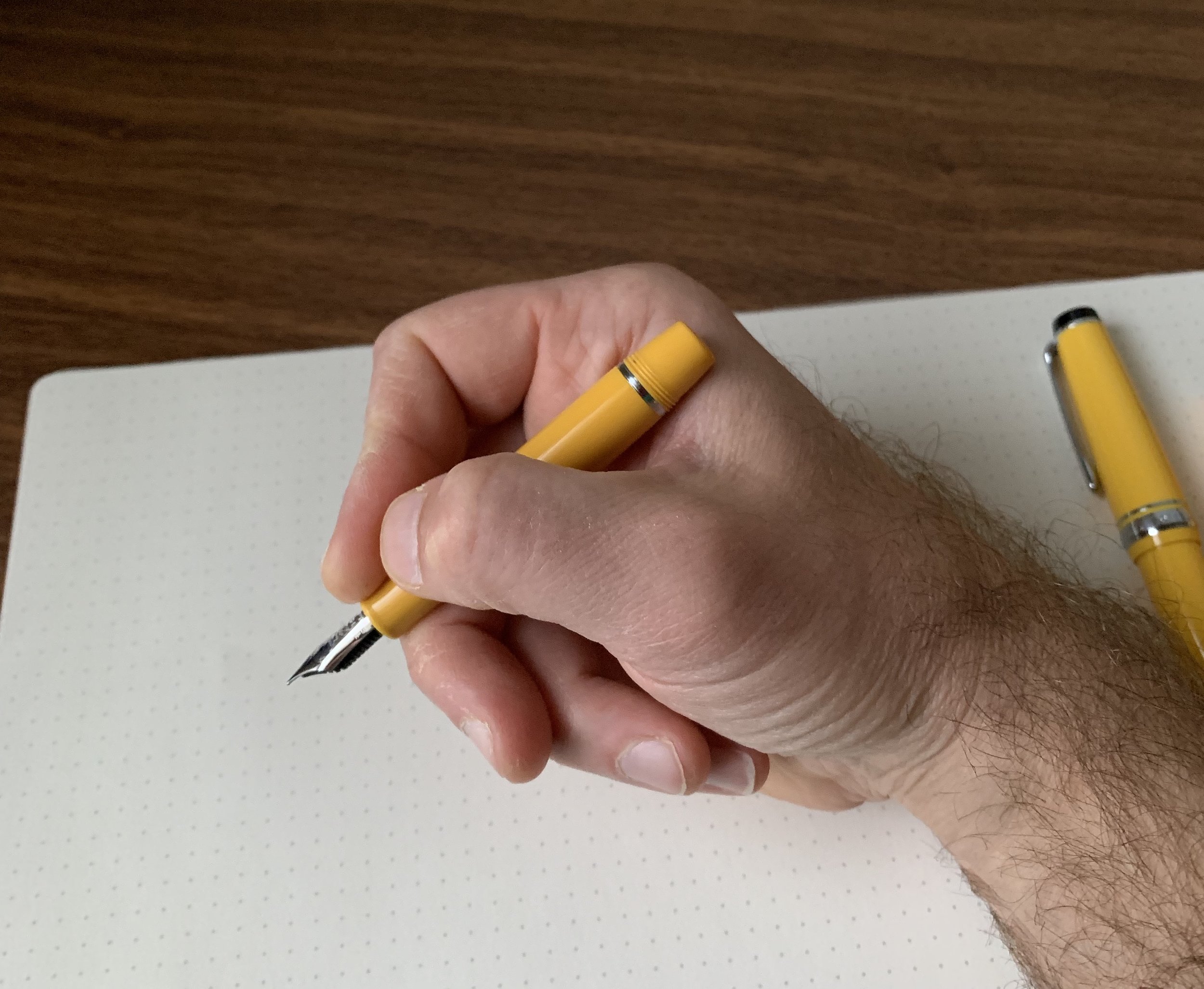I’m going to go ahead and call this a “journal review” to dispel any illusion about what I feel is a common misconception about this product: that it’s a “daily planner” intended to be carried around as a calendar replacement. No, the Trigg “Life Mapper” is what the company describes as a “productivity and mindfulness diary that transforms your goals into success,” by bringing “planning, habits, and mindfulness to a full journal format.” In other words, it’s a journal designed to guide your periodic (yearly, monthly, weekly, daily) reflection on your personal and professional goals, not to track your schedule. The Life Mapper has generally been favorably received, winning awards including “Best Diary” at the 2018 UK Calendar awards (which may have contributed towards some misconceptions about the product), and “Best New Product” at the 2017 London Stationery Show.
Sure, there’s an annual calendar at the front, but as you can see it’s for big-picture stuff only (unless you write really small).
So Who Is The Targeted Audience for the Trigg and How Does This Thing Work?
The Life Mapper has been around for a few years, and was originally a Kickstarter project designed, and since tweaked, with input from the internet productivity community. If you follow productivity blogs and podcasts (which I’ll admit to dabbling in), you will recognize many of the goal-setting and “life mapping” concepts from books like Getting Things Done, The Seven Habits of Highly Effective People, The One Thing, and others. (By the way, another excellent online resource organized around of many of these same ideas is Shawn Blanc’s “The Focus Course,” especially if you’re looking for a more open-ended tool than the fairly rigid, condensed Life Mapper.)
The front section of the Life Mapper has a section to set annual, big-picture goals in each of four broad categories: self, work, passion, and relationships.
The Life Mapper uses the following process, summarized at a very high level:
Annual Forecast. At the beginning of each year, you do an “annual forecast” or planning session and set “big picture” goals for what you want to accomplish.
Goal-Setting and Progress-Tracking. Using the Life Mapper, you put these goals into four categories, which Trigg labels “Self,” “Work,” “Passion,” and “Relationships.” You set annual and weekly sub-goals, using the weekly and daily planning pages to make progress towards the “big picture.”
Regular Reviews. Periodically take stock of your progress. The Life Mapper includes sections for six-month and year-end self-assessments, though you can do this as often as you want.
The daily layout in the Trigg Life Mapper, which includes an inspirational quote or productivity tip, a space to organize tasks and goals in order of urgency, a section for “appointments,” and a blank space for open-ended writing/reflection/notes.
I’ve obviously not had time to work my way through the “process” set out in the 2019 Life Mapper, but I’ve used similar productivity techniques in the past and found that they do tend to work for me. The year that this blog really took off was actually the year that I was pretty strict in terms of setting goals and benchmarks for my writing and regularly tracking my progress. If you juggle multiple side hustles, or work in a job where you have to track multiple projects and/or develop new business and manage relationships with multiple long-term clients, you might find the techniques reflected here helpful. Even if you don’t adhere to the somewhat rigid structure set out in the Trigg, any sort of process that forces you to distill and refocus on those tasks and goals that are truly important (as opposed to a lot of the busywork that fills our days) can be quite useful, and even powerful.
In the middle and at the end of each year, the Trigg Life Mapper contains a section where you can assess your progress in the various categories.
So enough about productivity. How does the Trigg Life Mapper work as a stationery product? For starters, the 90 gsm paper is great. I tested a few fountain pens in the blank pages at the back, including one very wet stub nib, and while the paper is absorbent there was no bleed-through or feathering. The binding also appears durable, and I can see this sturdy book easily lasting a year, even if you lug it around with you day-to-day.
A few additional observations, both pros and cons:
Each daily page features a productivity tip or motivational quote, something I really enjoyed from my time with the Hobonichi Planner.
While I like the embossed design on the front, I do wish there were additional color schemes other than the turquoise/yellow.
While you can interpret the four categories however you want, based on your own personal goals and objective, I would have liked a couple of open categories to add a bit more flexibility, though this is likely impractical given that it would add bulk to an already thick journal.
The “Appointments” section on the daily page seems a bit incongruous. The Life Mapper clearly isn’t a calendar, and if an appointment is important enough to write down here, I would think that it would fall within the urgent/non-urgent task boxes. The extra space could have been used for more open “journaling” space (though of course you can just ignore the “appointments” section and do this anyway).
The Trigg Life Mapper is one thick notebook: check it out compared against a Baron Fig Confidant in leather cover!
Takeaways and Where to Buy
I’m the target audience for the Trigg Life Mapper, so I like the product. I may even use it this year, since it dovetails with the type of planning and goal-setting I do already. That said, it’s not for everyone, and if you’re considering making a purchase you should be aware that it’s a very structured product, unlike something like the Hobonichi Techo.
You can purchase the 2019 Trigg Life Mapper directly from Trigg. They have an Etsy Store as well, and The Gentleman Stationer is an Etsy affiliate, so if you’d like to help support the blog one easy way to do it is to purchase via my affiliate links, with no added cost to you. Either way, the price looks to be around $40 US shipped. I would get your order in soon to ensure delivery by January 1, especially if you are outside the UK, where Trigg is located.
Disclaimer: Trigg provided me with the journal featured here for review purposes, free of charge. This post contains affiliate links.






